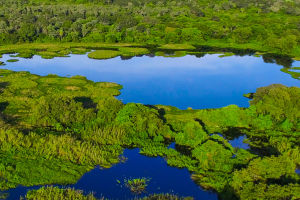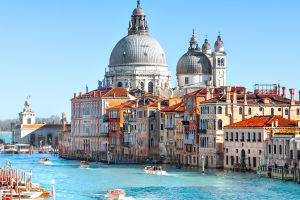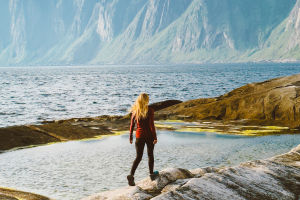Exploring the ancient Inca Trail is a dream adventure for many travelers.
This iconic 43-kilometer trek through stunning mountain landscapes, cloud forests, and ancient ruins leads to Machu Picchu, the famed "old mountain" in the Peruvian Andes.
This guide shares all the essential information for planning a classic 4-day trek along the Inca Trail, providing a clear and friendly overview for all our Lykkers ready to embark on this unforgettable journey.
The Trail and Its Highlights
Starting Point and Route
The trek begins near Cusco, the main city in the region and former Inca capital. From Cusco, travelers are usually transported by bus or train to Piscacucho (also known as Kilometer 82), where the trail officially starts.
The first day is relatively gentle, designed to help with acclimatization. Starting at about 2,600 meters above sea level, the route follows the Urubamba River through forested areas and past small villages, reaching Wayllabamba at roughly 3,000 meters, where the first campsite is set.
Challenging High Passes and Archaeological Sites
Day two is the most physically demanding section. From Wayllabamba, the trail ascends steeply alongside the Llullucha River until reaching the highest point of the trek, Warmiwañusca Pass, at 4,215 meters.
This high mountain pass offers impressive views and marks a significant milestone. Nearby lie the ruins of Runkurakay, where trekkers spend the second night camping at nearly 4,000 meters. The site features unique stone structures, including an egg-shaped building in ruins.
Entering the Cloud Forest and Final Sites
After the toughest day, the trail becomes easier. Day three descends to the archaeological complex of Sayaqmarka, perched on a rocky outcrop, followed by a forested ascent toward Phuyupatamarka ruins at 3,600 meters.
This area lies on the eastern, more lush side of the Andes, where the landscape shifts to dense, green jungle. After visiting these sites, the trail continues downward via stone stairways to Wiñay Wayna, the campsite for the final night, known for its well-preserved terraces and buildings.
Arrival at Machu Picchu
On the last day, the trek begins very early, with a two-hour walk to Inti Punku (Sun Gate). Here, the first rays of sunlight illuminate the ruins of Machu Picchu, creating an iconic moment treasured by many.
From the Sun Gate, it is a further one-hour descent to the ancient citadel itself. The visit to Machu Picchu occurs well before the arrival of day visitors who come by train from Cusco. After exploring the site, travelers return to Cusco by train in the evening.
Planning and Practical Information
Permits and Booking
Due to the trail's popularity and controlled access, permits for the Inca Trail are limited and must be booked at least six months in advance.
The full trekking package, usually costing around $760 per person, includes transfers, entrance fees, meals, guides, porters, cooks, tents, and camping equipment.
Recommended Gear
The trek demands proper equipment for varying conditions. Essential items include sturdy, well-broken-in hiking boots, warm clothing layers, windproof jackets, gloves, hats for sun protection, and rain gear.
A high-quality sleeping bag for cold nights is necessary. Personal items such as sunscreen, sunglasses, a first aid kit, medication for altitude sickness, water purification tablets, and insect repellent should be packed. Personal luggage weight is generally limited to about 5 kilograms, as porters carry the bulk of gear.
Best Time to Visit
The optimal trekking season coincides with the dry months from June through August. During this time, weather conditions are most stable, though the trail is busiest.
The rainy season runs from December to February, when the trail is less accessible and even closed for maintenance in February. Shoulder seasons (March-May and September-November) offer greener landscapes with fewer crowds and remain good alternatives.
Accessibility, Tickets, and Nearby Accommodation
Opening Hours and Entry Fees
Machu Picchu is generally open from 6:00 AM to 5:30 PM daily. Tickets to the site are included in the Inca Trail trekking package. For visitors not trekking, separate tickets can be purchased online or at official offices, though availability is limited and must be reserved in advance.
Accommodation Options Near the Trail Start
Cusco is the main hub for travelers preparing to hike the Inca Trail. The city offers a wide range of accommodation, from budget hostels to boutique hotels.
Average nightly prices range from approximately $30 for budget stays to $120 for mid-range hotels. For those looking to stay closer to the trailhead at Piscacucho or Ollantaytambo, small lodges and guesthouses are available, though options are more limited and generally cost between $40 and $80 per night.
Physical Challenge and Preparation
Altitude and Physical Effort
The Inca Trail is not technically difficult but demands good physical fitness due to altitude and sustained walking over uneven terrain. The risk of altitude sickness is real and should be taken seriously.
Trekkers are encouraged to prepare physically, acclimate properly, hydrate regularly, and carry medication designed to help prevent altitude sickness symptoms.
Daily Distances and Pace
The trek covers about 43 kilometers over four days. The first day involves moderate walking suitable for acclimatization, while the second day is the most challenging with steep ascents. Days three and four involve mixed terrain with both descents and moderate climbs, ending with the spectacular arrival at Machu Picchu.
In Conclusion
The classic Inca Trail trek is a once-in-a-lifetime experience blending natural beauty, cultural heritage, and personal challenge.
With careful planning, preparation, and adherence to trail regulations, this journey offers an unforgettable experience through some of the most breathtaking landscapes. Our Lykkers are advised to book early, pack wisely, and fully enjoy every moment on this remarkable path to Machu Picchu.


